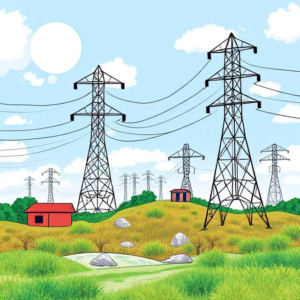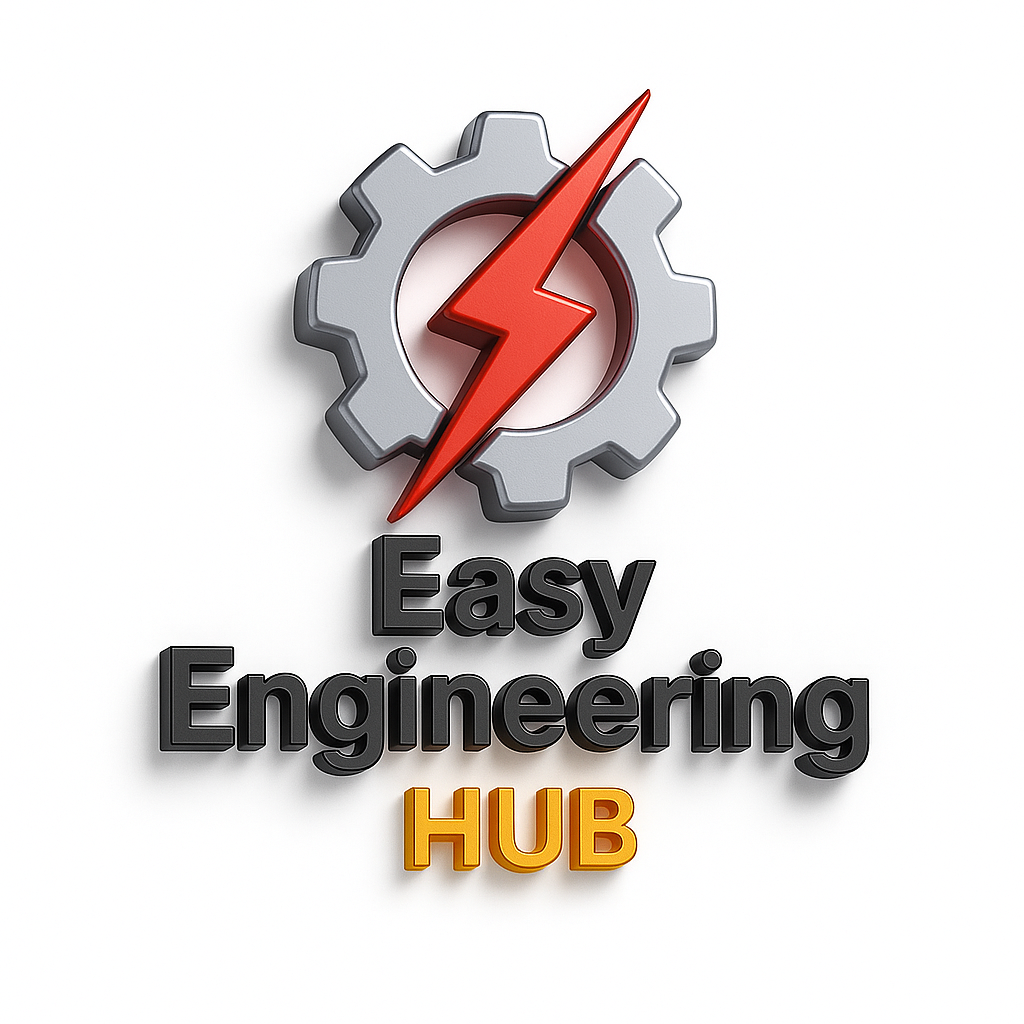Electrical power is produced from different natural resources and methods. These power sources can be broadly categorized into renewable and non-renewable sources.

Hydroelectric Power (Water Power) :
Hydroelectric power uses water to generate electricity. Water stored in a dam (usually in a river or a large water reservoir) is released, and it flows through turbines. The force of the flowing water spins the turbines, which are connected to generators that produce electricity.
Key Components:
Dam: Stores large amounts of water.
Turbine: Spins when water flows over it.
Generator: Converts the spinning turbine’s mechanical energy into electrical energy
Advantages:
Renewable and clean source.
Can produce large amounts of electricity.
Provides storage for water (important in dry seasons).
Disadvantages:
Environmental impact (disrupts rivers and wildlife).
Expensive to build dams and plants.
Thermal Power (Coal, Gas, Oil) :
Thermal power uses heat (usually from burning coal, oil, or natural gas) to create steam. The steam spins a turbine, which is connected to a generator that produces electricity. In some plants, heat can also come from geothermal sources(natural heat from the Earth’s core).
Key Components:
Boiler/Combustion Chamber: Burns fuel (like coal or gas) to produce heat.
Turbine: Steam from the boiler spins the turbine.
Generator: Converts the mechanical energy into electrical energy.
Advantages:
- Reliable and can produce large amounts of power.
- Can be controlled easily to meet demand.
Disadvantages:
- Non-renewable (depends on burning finite fossil fuels).
- Produces carbon emissions(pollutes the air and contributes to climate change).
- Mining and extraction of fossil fuels can harm the environment.
Nuclear Power
Nuclear power generates electricity by splitting atoms (usually uranium) in a process called nuclear fission. The splitting of atoms releases a lot of heat, which creates steam that spins a turbine to produce electricity.
Key Components:
- Nuclear Reactor: Where the fission (splitting of atoms) happens.
- Turbine: Spins due to steam produced from the heat of nuclear reactions.
- Generator: Converts the turbine’s movement into electricity.
Advantages:
- Generates a lot of power with relatively little fuel.
- No carbon emissions during operation (good for the environment).
Disadvantages:
- Radioactive waste: The waste can be dangerous and needs to be carefully stored for thousands of years.
- Risk of nuclear accidents (e.g., Chernobyl, Fukushima).
- Expensive to build and maintain plants.
Wind Power
Wind power uses the natural movement of wind to spin blades on a wind turbine. The spinning blades turn a generator to produce electricity.
Key Components:
- Wind Turbine: The large blades spin when the wind blows.
- Generator: Converts the mechanical movement of the blades into electricity
Advantages:
- Renewable and clean (no pollution).
- Can be installed on land or offshore.
- Low operating costs after setup.
Disadvantages:
- Intermittent: The wind doesn’t always blow, so it’s not as reliable as other power sources.
- Can affect local wildlife (e.g., birds) and be noisy.
- Requires a lot of space.
Solar Power
Solar power uses the sun’s energy to generate electricity.
-
- Photovoltaic (PV) cells: These are the most common method. They directly convert sunlight into electricity.
- Solar Thermal: Uses mirrors or lenses to focus sunlight to heat water or air, which then spins a turbine to generate power.
Key Components:
- Solar Panels (PV cells): Collect sunlight and convert it into electricity.
- Inverter: Converts the direct current (DC) electricity from the panels into alternating current (AC), which can be used in homes and businesses
Advantages:
- Renewable, clean, and abundant.
- Low maintenance costs once installed.
- Can be used on a small scale (e.g., home solar panels) or large scale (solar farms).
Disadvantages:
- Intermittent: Doesn’t work at night and is less effective on cloudy days.
- Requires large areas for solar farms.
- Initial installation cost can be high (although it’s decreasing over time).
Tags: alternating current, boiler, carbon emissions, clean energy, climate change, cloudy days, coal, combustion chamber, dam, Direct Current, electrical energy, electrical power, Electricity, environmental impact., expensive infrastructure, fossil fuels, gas, generator, geothermal, hydroelectric power, installation cost., Inverter, land requirement, maintenance cost, mechanical energy, mining, natural resources, noise, non-renewable sources, nuclear accidents, nuclear fission, nuclear power, nuclear reactor, offshore wind, oil, Photovoltaic Cells, pollution, power plant cost, radioactive waste, renewable sources, solar farms, solar panels, solar power, solar thermal, spinning blades, steam generation, sunlight, thermal power, turbine, uranium, water power, water storage, wildlife impact, wind power, wind turbine


